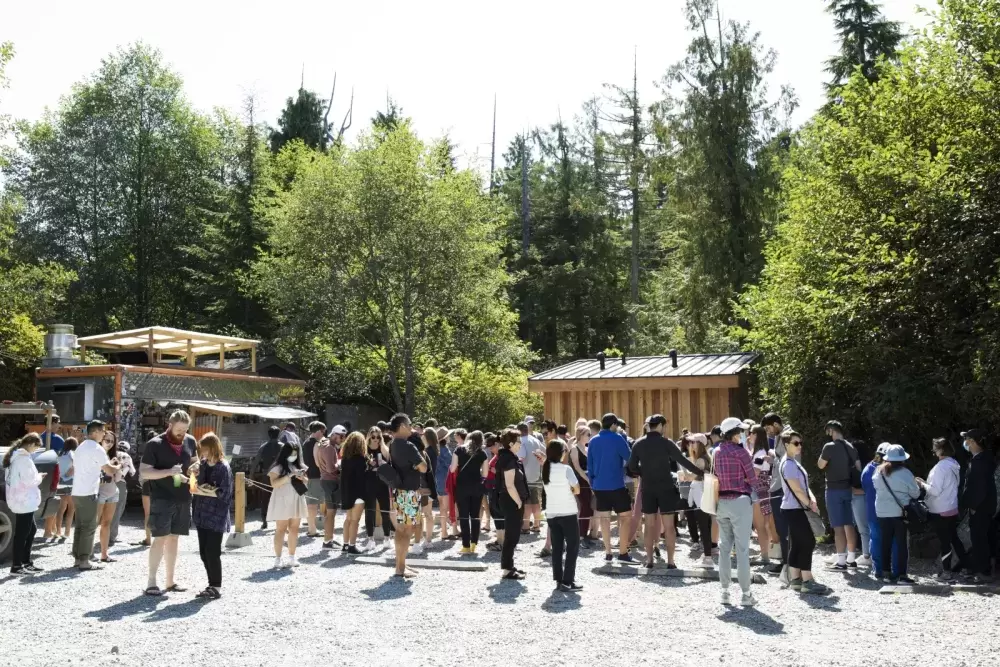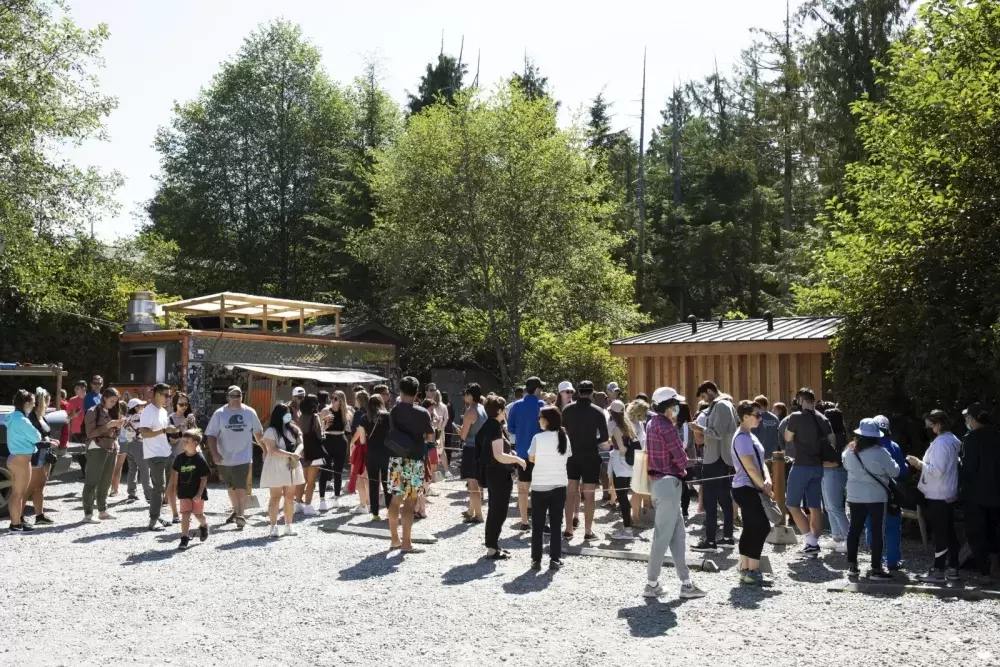Communities across the west coast of Vancouver Island are facing labour shortages, forcing some businesses to adjust their operations.
Lewis and Cathy George have been operating the House of Himwitsa, a First Nations art gallery and lodge in Tofino, since 1991.
In previous years, Cathy said their storefront would be open from 9:30 a.m. until as late as 7 p.m.
But without enough staff, Cathy said they now have to close their shop as early as 4 p.m.
“We don’t have the staff,” she said. “It’s kind of heartbreaking.”
Cathy regularly works 10-hour days to compensate for staffing shortages.
“I have to,” she said. “There’s no other way.”
When Terry Deakin launched INEO Employment Centres in Port Alberni 22 years ago it was created to facilitate a Services Canada pilot project that aimed to provide services to those struggling to enter the job market.
In the 22 years Deakin has been running INEO she said she’s never had a problem filling their programs.
"We are struggling right now," she said. “There are so many job opportunities out there. People can apply for jobs and get them, even if they can't keep them.”
The skills training for employment offered by INEO are usually operated at 100 per cent capacity. This year, Deakin said occupancy rates have dropped to 60 per cent for the first time.
While Deakin said she doesn’t think the labour shortage is caused by the COVID-19 pandemic, “it is correlated."
"People who were laid off or shut down because of the pandemic and were close to retirement age have decided just to stay at home," she said. "The other piece of it is that people are able to work from home.”
Indeed, Port Alberni’s population is aging.
The median age in the Port Alberni census agglomeration was 50 years old in 2021. Comparatively, the median age for B.C. as a whole in 2021 was 42.8 years old.
And as for the rest of the workers, Deakin said she’d be a “magician” if she knew where the answer.
“The demand [for workers] is extremely high all across the board," she said. "Everybody keeps thinking it's just the hospitality and tourism sectors that are crying for help right now. But as far as I can see, it's everywhere – every industry is looking for people.”
It’s a sentiment shared by Bill Brown, manager of employer services for Work BC in Port Alberni.
“The labour market was tightening up before the COVID-19 pandemic, he said. “The pandemic just made that happen much more quickly.”
To keep people safe during the pandemic, the government’s response was to send workers home – “and pay them to stay home,” said Brown.
The Canada Emergency Response Benefit (CERB) provided financial support to employed and self-employed Canadians who were directly impacted by COVID-19.
“But what we noticed is that when the benefits ended, [employers] still had a hard time finding workers,” he said.
And yet, Canada’s unemployment rate was 4.9 per cent in July – a record low, according to Statistics Canada.
Places like Tofino have their own very specific labour market challenges, said Brown.
“They need a workforce that’s bigger than the number of people who live there,” he said. “[Tofino] relies on a workforce that comes from somewhere else. And there isn’t housing and there isn’t good local transportation for people to get to their jobs.”
Despite only having a population of roughly 2,000 residents, Tofino draws around 600,000 visitors every year.
The median cost of a one-bedroom rental unit in Tofino and Ucluelet rose by 71 per cent between 2017 and 2020 to $1,200, according to the 2021 Clayoquot Biosphere Trust’s Vital Snapshot report. Two-bedroom units saw an increase of 6 per cent to $1,480, and three-bedroom units surged by 38 per cent to $2,200.
Al Little has been the general manager for the Nuu-chah-nulth Economic Development Corporation (NEDC) for the past 25 years.
NEDC is an organization that assists Indigenous peoples start, expand and acquire businesses through financial and business support.
While staffing challenges have forced operators to expand their businesses with more caution, Little said it hasn’t deterred anyone.
“It requires some extra thought and planning under the current times,” he said. “[Business operators] have to be aware of where they’re going to get employment from.”
Depending on where people are opening or expanding their business, Little said they may be limited by the housing market.
Increasing rental prices are making it more difficult to attract employees because the cost of living is “beyond the means of a lot of employees,” he said.
Without staff accommodation to offer potential employees, Cathy George said she relies on the local workforce.
But even then, she said “we can’t seem to retain staff.”
“If you can get somebody to stay for a few weeks, at least they’re here for a few weeks and they’re helping,” she said. “It’s just the norm. It’s just how it is.”
It’s a trend that causes Cathy to “worry about the next generation.”
“I don’t think a lot of people have the same work ethic their parents or grandparents had,” she said. “I try to instill in my kids and my grandkids that this is not a free ride. You’ve got to work.”
As the busy season in Tofino comes to an end, Cathy said she just has to make it through another four weeks of worrying about staff.
“I don't know what the answer is to the labor shortages,” she said. “It’s hard to say what's going to come of it.”








